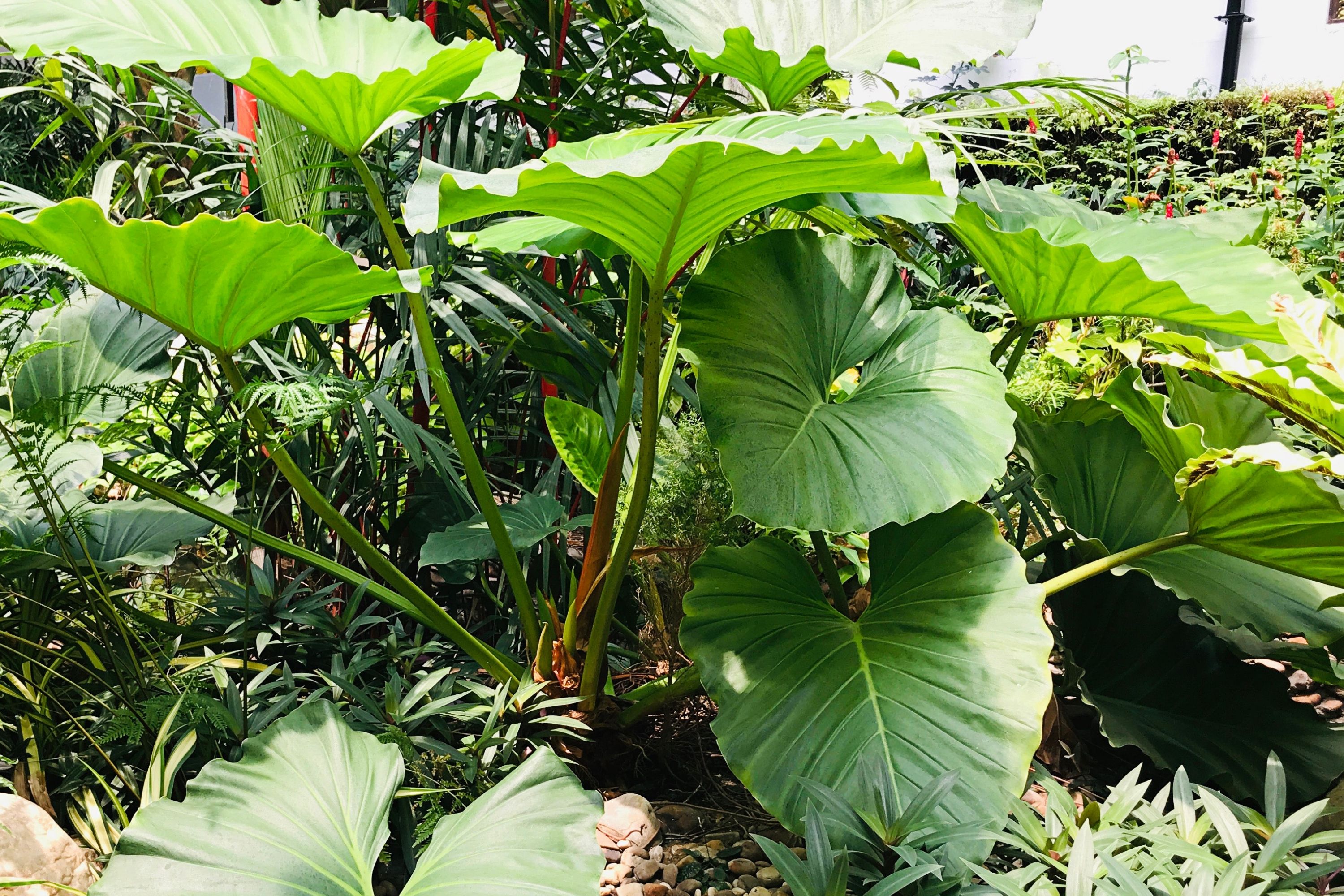Native Lily
(Alocasia brisbanensis)

Description
Alocasia brisbanensis is a species of plant in the family Araceae. Its common name is native lily or cunjevoi (the latter term also refers to a marine animal). It is native to rainforests of Eastern Australia. This plant has very large, spade shaped leaves on long, fleshy petioles. Alocasia may grow to a height of 1.5 metres. The summer flowers are a perfumed, greenish-cream colour that is similar to an arum lily. Red fruits follow the flowering. The plant is poisonous. Skin contact can lead to skin and eye irritation. Eating it causes immediate pain, burning sensation and swelling of the lips, tongue and mouth. Deaths have been reported. The poisonous agent is insoluble oxalate. As first aid rinse lengthily, administer small amount of milk, do not induce vomiting. The plant, related to Taro, is edible when well cooked. The closely related and almost indistinguishable plant Alocasia macrorrhizos is cultivated as a food plant in some parts of Oceania. Alocasia is a genus of rhizomatous or tuberous, broad-leaved, perennial, flowering plants from the family Araceae. There are about 90 accepted species native to tropical and subtropical Asia and eastern Australia. Around the world, many growers widely cultivate a range of hybrids and cultivars as ornamentals. The large, cordate or sagittate leaves grow to a length of 20 to 90 cm (8 to 35 in) on long petioles. Their araceous flowers grow at the end of a short stalk, but are not conspicuous; often hidden behind the leaf petioles. The corms of some species can be processed to make them edible, however, the raw plants contain raphid or raphide crystals of calcium oxalate along with other irritants (possibly including proteases) that can numb and swell the tongue and pharynx. This can cause difficulty breathing and sharp pain in the throat. Lower parts of the plant contain the highest concentrations of the poison. Prolonged boiling before serving or processing may reduce risk of adverse reactions. Additionally, acidic fruit such as tamarind may dissolve the raphides altogether. It's important to note, however, that this genus varies in toxicity, and can still be dangerous to ingest, even after taking precautions. Alocasia are tropical plants that are increasingly becoming popular as houseplants. The hybrid A. × amazonica has gained the Royal Horticultural Society's Award of Garden Merit.
Taxonomic tree:







